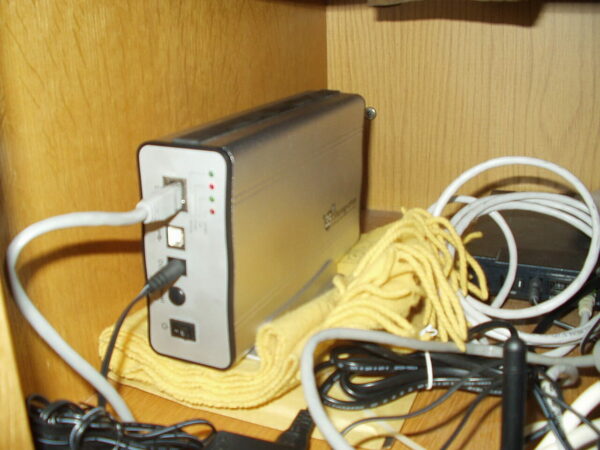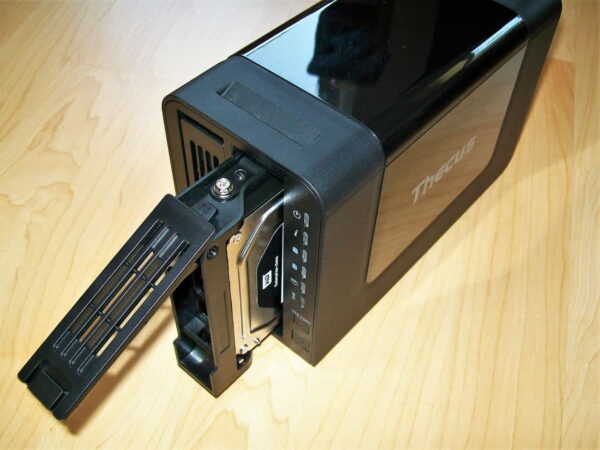✅ Last checked on
In the digital age, data is the lifeblood of businesses and individuals alike. Whether you’re a professional seeking efficient storage solutions or a tech enthusiast looking to streamline your digital life, Exploring Network Attached Storage (NAS) can be a game-changer.
In this comprehensive guide, we’ll delve into the world of NAS, covering everything from its basics to advanced tips and frequently asked questions.
NAS: Unveiling the Basics

What Is NAS?
At its core, Network Attached Storage (NAS) is a dedicated storage device connected to a network that allows multiple users and various devices to store and access data over the internet. NAS devices are essentially your personal cloud, offering a range of features and benefits.
Benefits of NAS
- Data Accessibility: NAS allows you to access your data from anywhere with an internet connection, providing unparalleled convenience.
- Data Redundancy: NAS systems often feature data redundancy through RAID configurations, ensuring your data’s safety.
- Cost-Effective: It’s a cost-effective way to expand your storage without relying solely on cloud services.
- Centralized Backup: NAS simplifies data backup by centralizing it, eliminating the need for multiple external hard drives.
- Media Server: Many NAS devices double as media servers, allowing you to stream content on various devices.
Setting Up Your NAS

Choosing the Right NAS Device
Before diving into the setup process, you need to choose the right NAS device for your needs. Consider factors such as storage capacity, number of drive bays, and processing power. Popular NAS brands like Synology, QNAP, and Western Digital offer a variety of options.
Initial Configuration
- Connecting to the Network: Connect your NAS device to your home or office network via an Ethernet cable.
- Installing Hard Drives: Depending on your NAS model, install the appropriate hard drives. NAS devices typically support both HDDs and SSDs.
- Accessing the Web Interface: Use your computer to access the NAS’s web interface by typing the device’s IP address in your web browser.
- Creating User Accounts: Set up user accounts with various levels of access for security.
- Data Transfer: Begin transferring your files to the NAS using the provided software or drag-and-drop methods.
Advanced NAS Features
Data Synchronization
NAS devices often offer synchronization features, ensuring your data is always up to date across multiple devices. This is especially handy for collaborative work and remote access.
Remote Access and Mobile Apps
Most NAS systems come with mobile apps, allowing you to access your files, photos, and videos on the go. This feature is a boon for travelers and professionals.
Backup and Data Recovery
Implementing a robust backup strategy is essential. NAS devices typically support various backup methods, including Time Machine for Mac users and third-party solutions for Windows.
Security Measures
To safeguard your data, enable security features like firewalls, encryption, and two-factor authentication. Regularly update your NAS firmware to stay protected against emerging threats.
Frequently Asked Questions (FAQs)
How do I access my NAS remotely?
To access your NAS remotely, configure port forwarding on your router. You can then use the device’s IP address or a domain name to access it via the internet.
Can I use my NAS as a media server?
Yes, many NAS devices have built-in media server capabilities. You can store your media files on the NAS and stream them to compatible devices.
What is RAID, and why is it important for NAS?
RAID (Redundant Array of Independent Disks) is crucial for NAS as it offers data redundancy and improved performance. It combines multiple hard drives into a single logical unit.
How often should I back up my NAS?
Regular backups are vital. Schedule daily, weekly, or monthly backups, depending on your data’s criticality. Consider using both on-site and off-site backups for added security.
Can I expand my NAS storage?
Yes, most NAS devices support storage expansion. You can add additional hard drives or expand existing ones to accommodate your growing data needs.
Is NAS suitable for small businesses?
Absolutely. NAS devices are scalable, cost-effective, and offer features like user access control and data redundancy, making them an ideal choice for small businesses.
Conclusion
Exploring Network Attached Storage (NAS) is a journey toward efficient data management and accessibility. Whether you’re an individual seeking a convenient way to store and access your files or a business aiming to enhance data security, NAS offers a versatile solution.
By following the setup tips and understanding the advanced features, you’ll be well-equipped to make the most of your NAS device.